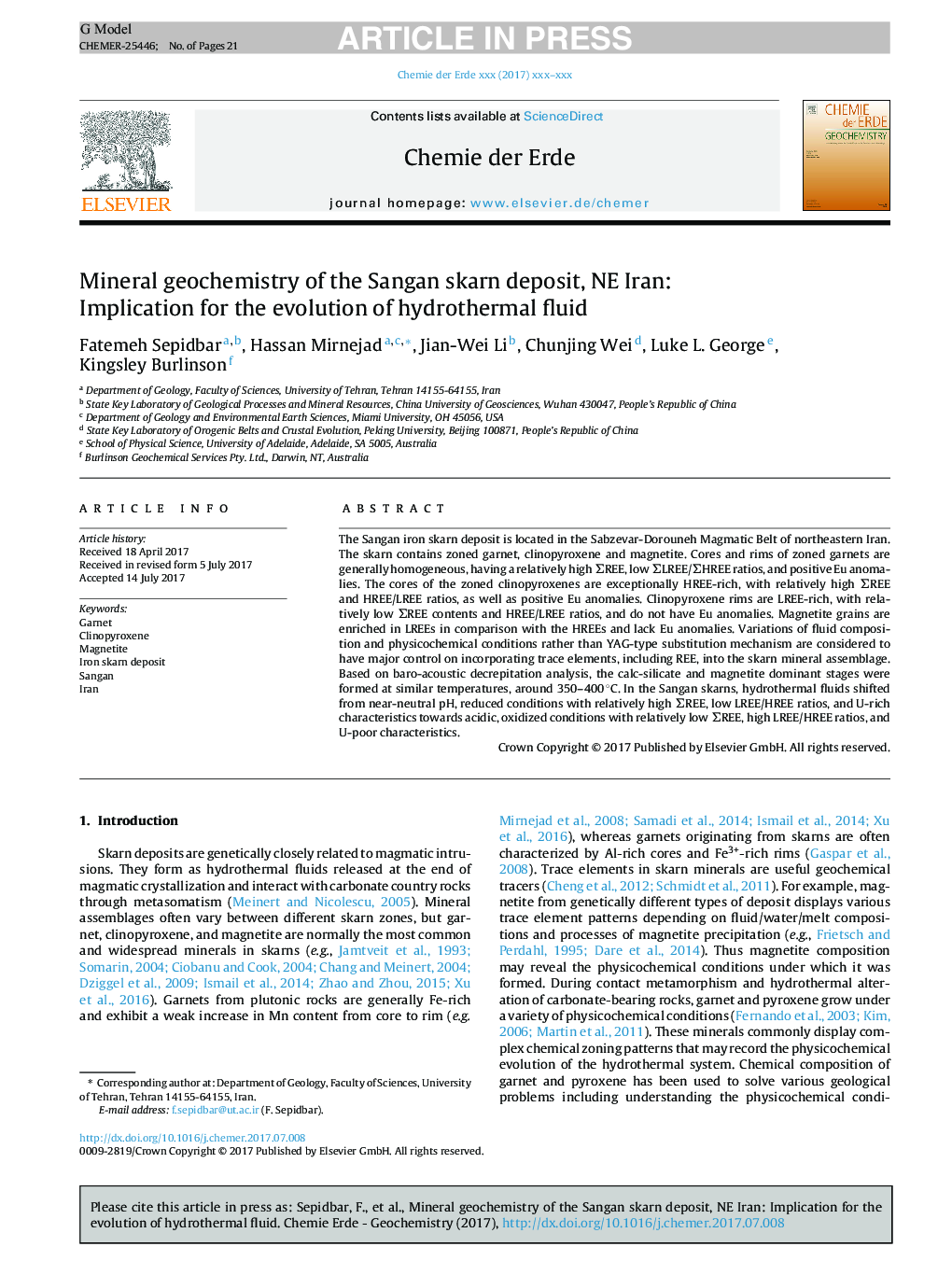| Article ID | Journal | Published Year | Pages | File Type |
|---|---|---|---|---|
| 8850210 | Chemie der Erde - Geochemistry | 2017 | 21 Pages |
Abstract
The Sangan iron skarn deposit is located in the Sabzevar-Dorouneh Magmatic Belt of northeastern Iran. The skarn contains zoned garnet, clinopyroxene and magnetite. Cores and rims of zoned garnets are generally homogeneous, having a relatively high ΣREE, low ΣLREE/ΣHREE ratios, and positive Eu anomalies. The cores of the zoned clinopyroxenes are exceptionally HREE-rich, with relatively high ΣREE and HREE/LREE ratios, as well as positive Eu anomalies. Clinopyroxene rims are LREE-rich, with relatively low ΣREE contents and HREE/LREE ratios, and do not have Eu anomalies. Magnetite grains are enriched in LREEs in comparison with the HREEs and lack Eu anomalies. Variations of fluid composition and physicochemical conditions rather than YAG-type substitution mechanism are considered to have major control on incorporating trace elements, including REE, into the skarn mineral assemblage. Based on baro-acoustic decrepitation analysis, the calc-silicate and magnetite dominant stages were formed at similar temperatures, around 350-400 °C. In the Sangan skarns, hydrothermal fluids shifted from near-neutral pH, reduced conditions with relatively high ΣREE, low LREE/HREE ratios, and U-rich characteristics towards acidic, oxidized conditions with relatively low ΣREE, high LREE/HREE ratios, and U-poor characteristics.
Keywords
Related Topics
Physical Sciences and Engineering
Earth and Planetary Sciences
Geochemistry and Petrology
Authors
Fatemeh Sepidbar, Hassan Mirnejad, Jian-Wei Li, Chunjing Wei, Luke L. George, Kingsley Burlinson,
